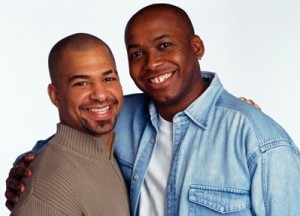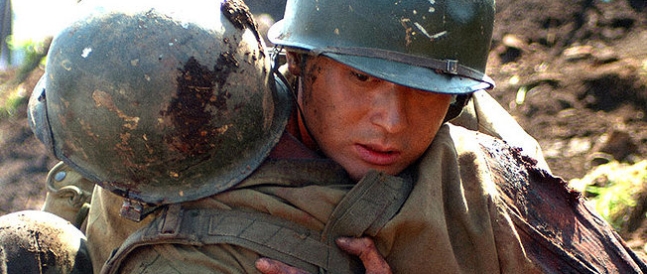Making It Personal
Something that has been inspiring, rewarding and educational for me these past few weeks is hearing from people who have experienced Touch Practice, either individually or in a workshop, who have then gone on to establish their own practice in one form or another. I love when people write to tell me how their own practice is developing, and which directions they are exploring. In many ways this is my ultimate hope for each person I meet in Touch Practice: that it become something any man can take away, personalize, and customize so that it serves him in his life. And because our lives are all very different, we have many different variations of Touch Practice that serve us.
 I have one friend who has become passionate about establishing “Touch Practice for Couples.” While he has not yet begun his practice, I know that he will; I can see it in his eyes and hear it in his voice. He has a calling to do this work with couples, to facilitate pairs of men who want to use Touch Practice to enhance a relationship with each other. I know he will do this and I am certain he will be successful.
I have one friend who has become passionate about establishing “Touch Practice for Couples.” While he has not yet begun his practice, I know that he will; I can see it in his eyes and hear it in his voice. He has a calling to do this work with couples, to facilitate pairs of men who want to use Touch Practice to enhance a relationship with each other. I know he will do this and I am certain he will be successful.
I’m excited and relieved about this, because over the years, people have asked, “do you do this work with couples?” My answer is always no, I don’t; it’s not my calling; it’s not something I have ever had an urge or a desire to do. But it is something that there is a need for, and now I can rest easy knowing there is at least one brother to carry that practice and meet that need. The answer to the question in the future can be, “no, I don’t do Touch Practice with couples, but here’s the name of a friend who does.”
I know another brother who is just now beginning his own practice–and he has a beautiful practice, a gentle, careful practice–of holding those who are hesitant, cautious, not ready to jump in to the pool but tentatively willing to put one toe in the water. His practice is perfect for those who are engaging trauma or working out different types of wounding. If Touch Practice is a form of “yogic” practice, the first friend I mentioned above might be teaching the equivalent of “partnered yoga,” while this second friend might be offering the Touch Practice equivalent of “restorative” or “gentle” yoga. His practice is perfect for men who are not eager or even willing to be out of their clothing; on the contrary, it supports men who will have very specific and important requests around boundaries which need to be honored with great vigilance. He too has a particular place in this world, and I am excited, and relieved, that he is carrying his practice in an increasingly public way and reaching out to people around him.
One of the Iraq war vets I hold regularly has begun to incorporate touch in the way he deals with men in his unit. It’s far from what we might consider “classic” Touch Practice, but “Sean” writes,
“I’ve started watching for moments when I can place one hand on the shoulder of men who are talking to me, in as non-obvious a way as I can. It can’t be obvious; but you’d be surprised–sometimes it’s almost like men are begging, aching, for a hand on the back. Someone will be walking along side of me talking and I’ll just lightly put my hand on his shoulder or back as if to say, ‘I’m here with you buddy, I am.’ I don’t try to get my arm around them or anything; I just try to make contact. I watch for the chance. If I get the chance, I take it.
And sometimes amazing things will happen, just from that! Sometimes I can feel a guy start to “melt,” just like what you call the “edges melting” when we do frontal contact Touch Practice in our work. That thing that you call my “energy body” that melts when I get held? I know when I feel the edge on his back start to soften that he’s open to me getting closer, but I don’t always get closer physically. Sometimes just the conversation will deepen at that very moment and he’ll tell me something that he’s afraid of, or worried about. I don’t touch my men often, but it’s amazing. Sometimes just a little bit of touch at the right moments makes things shift.”
There are variations of the work that are in such a new and tentative exploratory phase that our conversations are more theoretical: what would Touch Practice look like if it were adapted for a specific population of men, or a a specific issue? Some of the variations people have engaged me on, either through conversation or actual hands-on work, have explored questions like “what would Touch Practice for transgender men look like; how would it be structured, and what special aspects would it include? Are there aspects of maleness and masculinity which can be explored in the container of touch, specifically the containers that Touch Practice offers?”
Other populations with special touch needs might include combat veterans, particularly those suffering from PTSD; survivors of childhood physical or sexual abuse, communities of HIV+ folks, spiritual communities that have specific proscriptions and boundaries around touch, and even groups like athletic teams.
 One coach of a wrestling program for younger (teen and pre-teen) boys wrote me, amazed, after reading my description of a “Puppy Pile.” He wrote to tell me that over his years as a coach, he often witnessed remarkably similar (but more cursory) behavior in groups of young male athletes. He never really understood why they would “pile on” each other, laughing and making a heap on the mat, until he recognized it, through one of my articles, as a bonding ritual, an exercise in establishing a sense of “pack” among young athletes.
One coach of a wrestling program for younger (teen and pre-teen) boys wrote me, amazed, after reading my description of a “Puppy Pile.” He wrote to tell me that over his years as a coach, he often witnessed remarkably similar (but more cursory) behavior in groups of young male athletes. He never really understood why they would “pile on” each other, laughing and making a heap on the mat, until he recognized it, through one of my articles, as a bonding ritual, an exercise in establishing a sense of “pack” among young athletes.
It seems like every week I open yet another e-mail from someone telling me how they’ve adopted and adapted some aspect of something they learned in Touch Practice, taken it back to their own community, made it relevant and useful for that particular group, and found benefit from it. Great work. Keep it going, brothers! Men who hold each other might just lose the desire to kill each other. One guy at a time, and we’ll get there eventually. Have a great week.
Have thoughts you’d like to share?
Touch Practice is a sacred practice for me, and part of that is keeping confidences sacred. While a name and e-mail address are required to post a comment, feel free to use just your first name, or a pseudonym if you wish. Your e-mail address will never be seen by or shared with anyone. It is used to prevent spam and inappropriate comments from appearing in the blog. I’d really like to hear from you!














Thank you for this beautiful post. I love how the soldier was able to incorporate Touch Practice into his life. I’ve never experienced the practice, but I have tried to make touch more part of my life.
Thanks Andrew! It’s great to have you along on this very interesting journey. The ways in which people use touch in their lives are as different as all of us are. Thanks for writing and please keep in touch.